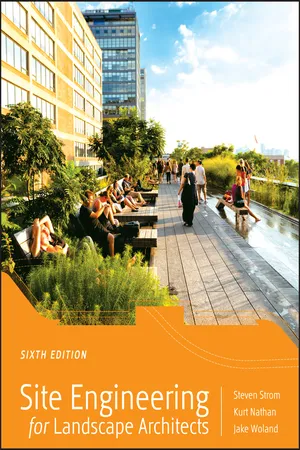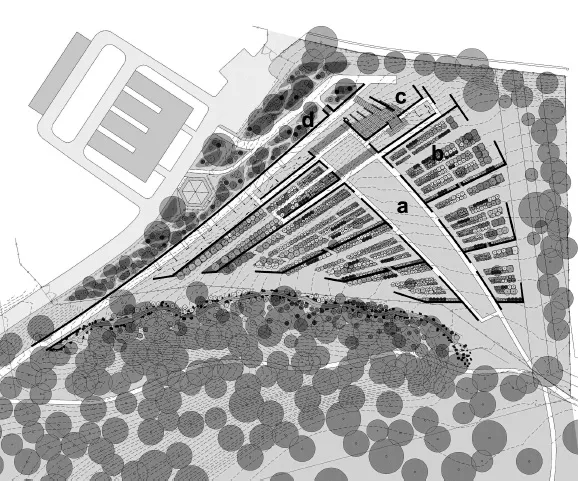
- English
- ePUB (mobile friendly)
- Available on iOS & Android
Site Engineering for Landscape Architects
About this book
The Leading Guide To Site Design And Engineering— Revised And Updated
Site Engineering for Landscape Architects is the top choice for site engineering, planning, and construction courses as well as for practitioners in the field, with easy-to-understand coverage of the principles and techniques of basic site engineering for grading, drainage, earthwork, and road alignment. The Sixth Edition has been revised to address the latest developments in landscape architecture while retaining an accessible approach to complex concepts.
The book offers an introduction to landform and the language of its design, and explores the site engineering concepts essential to practicing landscape architecture today—from interpreting landform and contour lines, to designing horizontal and vertical road alignments, to construction sequencing, to designing and sizing storm water management systems. Integrating design with construction and implementation processes, the authors enable readers to gain a progressive understanding of the material.
This edition contains completely revised information on storm water management and green infrastructure, as well as many new and updated case studies. It also includes updated coverage of storm water management systems design, runoff calculations, and natural resource conservation. Graphics throughout the book have been revised to bring a consistent, clean approach to the illustrations.
Perfect for use as a study guide for the most difficult section of the Landscape Architect Registration Exam (LARE) or as a handy professional reference, Site Engineering for Landscape Architects, Sixth Edition gives readers a strong foundation in site development that is environmentally sensitive and intellectually stimulating.
Frequently asked questions
- Essential is ideal for learners and professionals who enjoy exploring a wide range of subjects. Access the Essential Library with 800,000+ trusted titles and best-sellers across business, personal growth, and the humanities. Includes unlimited reading time and Standard Read Aloud voice.
- Complete: Perfect for advanced learners and researchers needing full, unrestricted access. Unlock 1.4M+ books across hundreds of subjects, including academic and specialized titles. The Complete Plan also includes advanced features like Premium Read Aloud and Research Assistant.
Please note we cannot support devices running on iOS 13 and Android 7 or earlier. Learn more about using the app.
Information
Chapter 1
Site Engineering IS Design
WHY IS AN UNDERSTANDING OF THIS MATERIAL IMPORTANT?
THE DESIGN LANGUAGE OF SITE ENGINEERING
Aesthetics

Geomorphic
Architectonic
Leventritt Garden at the Arnold Arboretum.1

Table of contents
- Cover
- Contents
- Title Page
- Copyright
- Dedication
- Preface
- Acknowledgments
- Chapter 1: Site Engineering IS Design
- Chapter 2: Grading Constraints
- Chapter 3: Contours and Form
- Chapter 4: Interpolation and Slope
- Chapter 5: Grading of Simple Design Elements
- Chapter 6: Grading Process
- Chapter 7: Soils in Construction
- Chapter 8: Earthwork
- Chapter 9: Storm Water Management
- Chapter 10: Storm Water Management System Components
- Chapter 11: Soil Erosion and Sediment Control
- Chapter 12: Determining Rates and Volumes of Storm Runoff: The Rational and Modified Rational Methods
- Chapter 13: Natural Resources Conservation Service Methods of Estimating Runoff Rates, Volumes, and Required Detention Storage
- Chapter 14: Designing and Sizing Storm Water Management Systems
- Chapter 15: Site Layout and Dimensioning
- Chapter 16: Horizontal Road Alignment
- Chapter 17: Vertical Road Alignment
- Appendix I: Table of Metric Equivalents
- Appendix II: Metric Drawing Scales
- Glossary
- Bibliography
- Index
- End User License Agreement